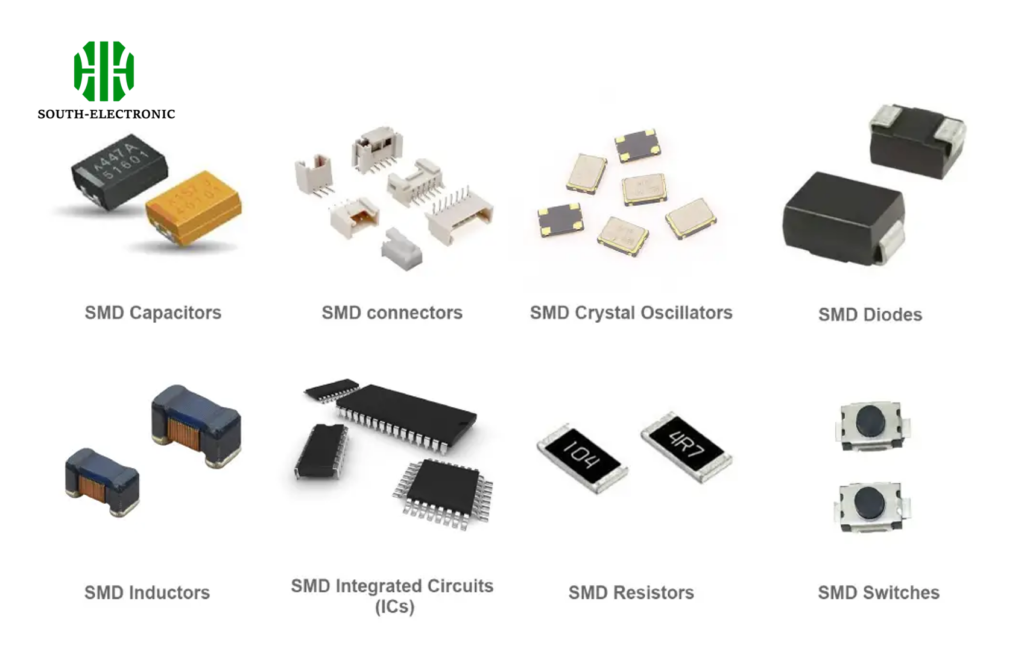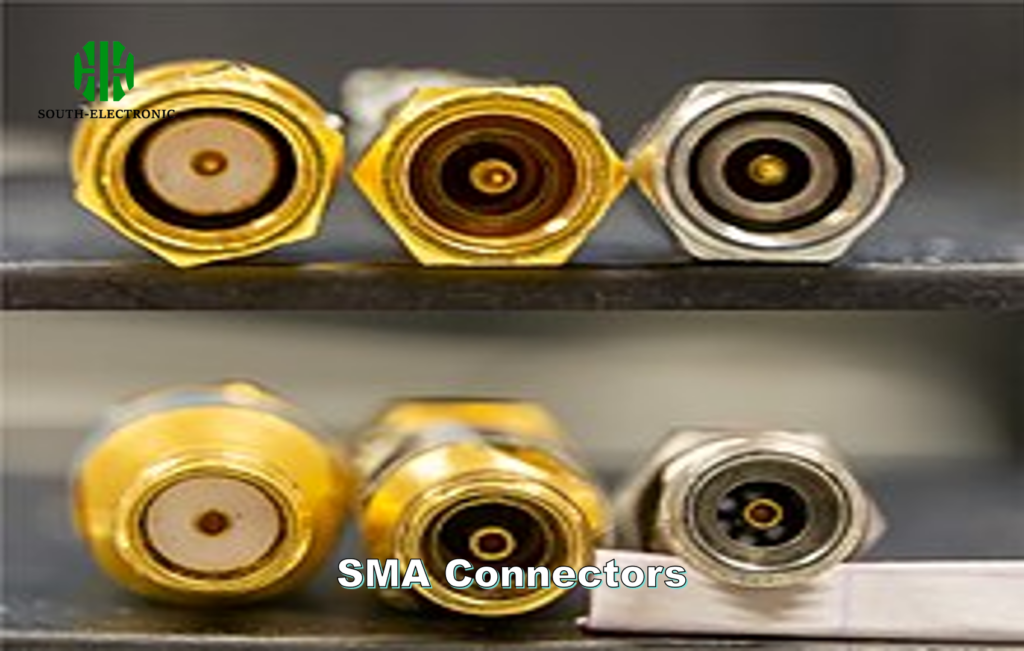What is the Difference Between SMD and SMA?
SMD refers to the individual surface-mount components used in various electronics, while SMA refers to the assembly process that combines multiple components, particularly in high-frequency applications like wireless communications. When working with high-frequency circuits, SMA is ideal, while for general electronics, SMD offers space efficiency and cost savings.
What is SMD (Surface-Mount Device)?
SMD means Surface-Mount Device. It means that the electronic parts are mounted directly on the surface of the Printed Circuit Board (PCB). This is different from the old way of doing things, where holes were drilled in the PCB and the parts were put through the holes and then soldered on the other side.
Types of SMD Components
SMD components come in a variety of forms, including:
- Resistors
- Capacitors
- Diodes
- LEDs
- Transistors

Below is a table listing common SMD component types and their typical applications:
| Component | Function | Common Application |
|---|---|---|
| Resistor | Limits current | Power supply circuits |
| Capacitor | Stores electric charge | Timing circuits, filtering noise |
| Diode | Allows current to flow in one direction | Power conversion circuits |
| LED | Emits light | Display and indicator lights |
| Transistor | Amplifies or switches signals | Amplifiers, switching devices in circuits |
Advantages of SMD Technology
- Space Efficiency: SMDs are compact, allowing for more components to fit on smaller boards.
- Improved Performance: Better high-frequency performance due to shorter leads and minimized inductance.
- Automated Production: Surface-mount technology (SMT) is fully automated, reducing labor costs and manufacturing errors.
What is SMA (Surface-Mount Assembly)?
SMA, on the other hand, stands for Surface-Mount Assembly. It‘s the process of assembling multiple SMDs onto a PCB. It’s more than just mounting individual components; it’s the complete assembly of all components onto the board, including SMDs, connectors, and other parts.
Key components in an SMA include:
- Integrated Circuits (ICs)
- Transistors
- Connectors

Below is a simple comparison between SMD and SMA:
| Feature | SMD (Surface-Mount Device) | SMA (Surface-Mount Assembly) |
|---|---|---|
| Definition | Single electronic component | Entire assembly with multiple components |
| Application | Used in individual electronic components like resistors, LEDs, and capacitors | Used in larger assemblies like PCBs for mobile phones, TVs, etc. |
| Complexity | Less complex | More complex, involving multiple steps |
Applications of SMA
SMA is commonly used in high-frequency applications, such as:
- Wireless communication devices (e.g., Wi-Fi routers, Bluetooth devices)
- Satellite communications (e.g., signal processing in satellite modules)
- Microwave transmission systems
SMA Connectors
One thing that’s important to know about SMA is that it uses SMA connectors, which are commonly used for transmitting high-frequency signals. SMA connectors are semi-precision, coaxial RF connectors that are designed to perform well up to 18 GHz.

Why Use SMA?
- High Precision: SMA provides precise connection and signal integrity, especially in high-frequency applications.
- Durability: SMA connectors are designed for rugged environments.
- Low Loss: SMA ensures minimal signal loss in high-frequency circuits.
Key Differences Between SMA and SMD
The main difference between SMD and SMA is what you’re talking about. SMD refers to the individual components that you’re mounting on the board. SMA refers to the whole process of putting all the components on the board and soldering them.
| Aspect | SMD | SMA |
|---|---|---|
| Definition | Refers to a single surface-mount component | Refers to the assembly of all SMD components |
| Application | Used across all types of electronics | Primarily used in high-frequency assemblies |
| Example | Resistors, LEDs, capacitors | Wireless devices, satellite systems |
| Cost | Generally lower for individual components | More expensive due to complex assembly |
| Frequency Range | Used in low-frequency applications | Suitable for high-frequency applications |
Advantages and Disadvantages of SMD and SMA
Advantages of SMD:
- Compact Size: SMDs are smaller than traditional through-hole components, saving space on the PCB.
- Lower Manufacturing Costs: The automated process of SMT lowers production costs.
- Faster Production: SMT allows for quicker, automated manufacturing.
Disadvantages of SMD:
- Limited Power Handling: SMDs have limited power-handling capability compared to through-hole components.
- Difficult for Manual Soldering: Due to their small size, they are challenging to solder manually.

Advantages of SMA:
- High Precision and Performance: Suitable for high-frequency, high-performance devices.
- Durable and Reliable: SMA connectors provide strong, durable connections.
Disadvantages of SMA:
- More Expensive: SMA is generally more costly due to the complexity of assembly and the precision required.
- Limited to Specific Applications: SMA is primarily used in RF applications and high-frequency systems, limiting its broader use.
SMDs are surface-mount devices. They’re the little parts that go on circuit boards. SMAs are surface-mount assemblies. That’s when you put the little parts on the circuit boards. It’s especially important for high-frequency stuff like wireless communications.



